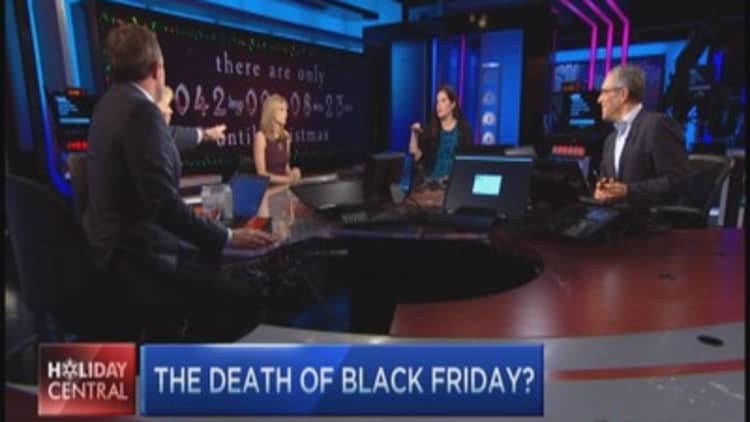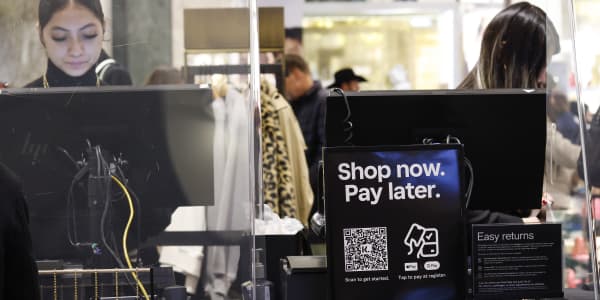Everybody loves wine on the holidays. From a fine California zinfandel on Christmas Eve to the bubbly stuff on New Year's Eve, it's the ultimate party accompaniment.
Like with shopping in general, consumers are turning to the Internet for their wine purchases. And when looking for the desired beverage, the website Wine.com is a natural landing spot, which explains why the San Francisco-based company generates about 30 percent of its annual revenue in the first three weeks of December.
That's great, except when the site is slow. Because consumers can click away and find plenty of other places to buy a 2011 cabernet franc, the experience has to be clean, fast and even enjoyable. According to Aberdeen research, an additional one second in application load time decreases page views by 11 percent and purchases by 7 percent. For Wine.com, that can translate into tens of thousands of dollars in revenue a day.
So two years ago, when Wine.com was searching for a way to avoid those damaging downtimes (or spinning circles, formerly the hourglass), the company signed on with an application delivery service called Instart Logic. At the time, Wine.com was using a content delivery network (CDN) that had been acquired by Akamai, which is the leader in the CDN space. The problem, as Wine.com saw it, was that the service didn't handle all the nuances of the modern-day shopper.

Now, people will do a quick browse from a smartphone while on the move, then shift to a tablet while sitting in front of the TV and finally make a purchase from a laptop. Consumers expect shopping sites to adapt to their use of technology, but the older CDN services were built for a PC-centric world.
"We were desperate to find another solution," said Greg Tatem, Wine.com's vice president of engineering. "This isn't about just one device anymore, and not just about mobile. We have to completely rethink that paradigm."
For Instart, Wine.com was a very early customer. The Palo Alto, California-based company has since grown so fast that investors like Andreessen Horowitz, Greylock Partners and Kleiner Perkins Caufield & Byers have been pouring in money, including a $26 million financing round in May.
This is only the second holiday season for Instart since its public launch in mid-2013. The company now has about 100 customers, with 90 percent in online retail, said its founder and chief executive officer, Manav Mital. They include Dollar Shave Club, One Kings Lane and Stella & Dot. Washington Post is also a client.
Read More'Boring' Akamai hot tech play
Taking on market leader Akamai is no easy task, and if CNBC.com's series "Powering the holidays" were all about the biggest technology players, Akamai would capture most of the CDN ink. The Cambridge, Massachusetts-based company, founded in 1998, generated more than $1.5 billion in revenue last year and has more than 150,000 servers in 92 countries. Best Buy, L'Oreal, Microsoft and Staples.com are among the many large brands that count on Akamai to speedily delivery traffic to their sites.
Given that 15 to 30 percent of Web traffic flows through Akamai, the company has an added security layer because it has seen many of the most sophisticated cyberattacks and can react accordingly. And for the first time, through a partnership with Cisco, Akamai is bringing its technology into stores, powering digital signage and product recommendations for retailers like Louis Vuitton.
The company feels it handles the habits of the multiplatform shopper just fine.
"We have a very broad set of capabilities that really address customer problems in three different segments," said Neil Cohen, an Akamai vice president. Last year on Cyber Monday, the company's network saw 11.2 million page views per minute at its peak. "When retailers need us the most, we deliver at scale for all of our customers," Cohen said.
Read MoreDollar Shave's razor strategy
As if going up against Akamai wasn't enough, Instart is also taking on Amazon.com, which has a product called CloudFront that's part of its fast-growing cloud services business.
But Instart has one big advantage over most enterprise software start-ups that are trying to displace established incumbents: It takes almost no time to switch. Companies don't have to implement a big software suite and get employees trained on new tools. Rather, they just redirect how traffic comes to their site and within a few minutes, they start seeing the results.
"Switching costs are shockingly low," said Mital, who started the company in 2010, after stints at Yahoo and Aster Data, which was acquired by Teradata. With that, "we make sure we enable the delivery of the best possible experience to users across devices."

To make it even more alluring, Instart announced in September that it would spend a total of up to $100 million to buy existing Akamai customers out of their contracts.
This will be Stella & Dot's second holiday rush using Instart since switching from Akamai. Eduardo Frias, the company's chief information officer, said that based on its internal analysis, it's seen a 40 percent to 50 percent performance increase.
"For every second that we shave in speed of delivering content to users or consumers, we have an increase in conversion," Frias said.
Read MoreTailwind benefiting e-commerce
Stella & Dot, based in San Bruno, California, isn't a typical online retailer. More than 30,000 independent stylists have signed up with the company to sell women's jewelry and handbags through their own online storefronts and through trunk shows, where they host events so that customers can try on products and get advice in a social setting. Stylists earn a share of their sales.
Stella & Dot generated more than $200 million in revenue last year, and out of that paid commissions to the stylists. The company has to not only make sure that its own site is responsive and reliable, but has to do the same for its many stylists, because their customers can always shop elsewhere.
"We have a very short window of opportunity to capture the attention of that person," said Frias. "We don't have the luxury to say come back tomorrow or we'll do it some other time or come to my store. Delivery of content for us is critical."




